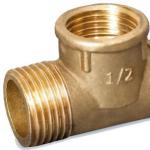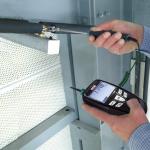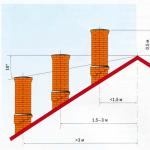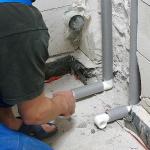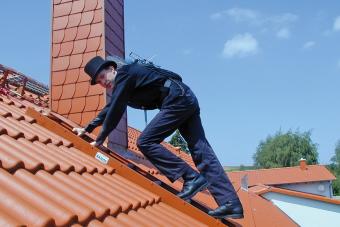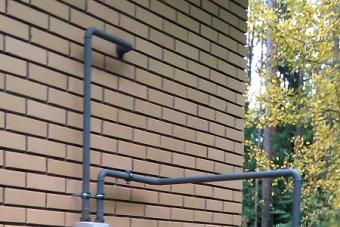Puffs of steam rising above the chimney indicate that the house is warm and comfortable. But the circumstances under which the smoke becomes black, the draft deteriorates significantly, and the combustion products spread throughout the room clearly indicate the need to clean the chimney system. It needs regular cleaning of soot, carbon deposits and checking the passage for debris that prevents smoke from escaping. Otherwise, there is an increase in the concentration of carbon dioxide in the room, which can lead not only to problems with the human respiratory system, but also to suffocation. The article will focus on chimney cleaning devices.
Frequency of chimney cleaning and methods for determining the degree of contamination
Regardless of the quality of the installation of the combustion products removal system, its cleaning procedures should be carried out regularly. But the question arises, for what period does the pollution of the chimney systems occur. Adhering to all recommendations for operation, it is possible to clean the chimney once every 3 years.

- The cause of chimney clogging can be the use of damp logs, as well as the burning of coniferous trees. This is due to the fact that the oils released during the combustion of resinous tree species contribute to the planting of soot on the walls of the chimney. In addition, it is worth remembering the main rule for using heating systems - do not burn plastic waste. This gross violation affects not only the rapid contamination of the chimney, but also the penetration of substances hazardous to health into the room.
- A clear sign of contamination of the chimney channel is a change in the color of the smoke. When the system is working properly, its shade will be transparent or minimally darkened. As soon as the color turns black, this indicates a blockage in the chimney and the need for procedures to clean it.
- In addition, the color of the flame can serve as an indicator of contamination. Similar to a shade of litmus paper, instead of the usual light orange, it clearly indicates the need to clean the chimney.
The expediency of cleaning the chimney from soot
Despite the quality of modern materials that are used for laying the chimney, any system needs timely, and most importantly, thorough cleaning.

Causes
- The soot accumulated on the walls significantly reduces the clearance of the chimney and makes it difficult for smoke to escape.
- Plaque prevents full warm-up and reduces traction. As a result, smoke enters the room and the efficiency of the heating device decreases.
- Significant volumes of soot have a high ability to ignite, which leads to the gradual destruction of the chimney masonry.
- Lack of traction can cause carbon monoxide poisoning.
Chemical cleaning of chimneys
A wide range of commercially available chemicals can be used to clean the flue system. This method is the easiest to use, but requires frequent repetition of the procedure. Chemicals are used precisely at the time of heating. During combustion, active substances are released that contribute to the structural destruction of soot deposits and its further exfoliation from the surface of the chimney pipe.
Effective smoke path cleaners
- PHC- A powerful chemical against soot. The chimney cleaning powder is burned together with the fuel without being removed from the packaging. The amount of funds can be determined by the attached instructions. The most common proportion: 200 grams per ton of fuel.
- Kominichek- a chimney cleaner made in the Czech Republic. The package contains five sachets, packaged in 14 grams. This amount must be applied within three months. Purpose of the product: elimination of soot and soot. Restriction of layer thickness - no more than 2 mm. The substance, entering the chimney, starts the reaction of converting plaque into oxide, which subsequently burns out without the formation of fire. The tool is very easy to use: one bag is immersed in the furnace along with the fuel.

- Chimney sweeper produced in the form of briquettes. It is applied during burning of fuel. Its effectiveness lies in the release of volatile substances, which cause drying and stratification of soot deposits. The tool can also be used as a preventive measure. In this way, it is possible to extend the life of the chimney by reducing the amount of creosote deposits and preventing soot from igniting. Most often, the product is used for chimney structures made of bricks.

Do-it-yourself mechanical cleaning of chimneys
At one time, the profession of a chimney sweep was in great demand, since almost every house had stove heating. In the age of high technology and high-strength materials from which modern chimney systems are made, they most often need prevention rather than thorough cleaning. But, at the same time, with a certain skill, you can perform a mechanical cleaning of the chimney system on your own.
To do this, you must follow the rules of operation. Before starting cleaning, it is necessary to carry out preparatory work:
- it is necessary to close all chimney openings as tightly as possible, in order to avoid the penetration of soot into the room;
- when cleaning the chimney, the blower and doors should be closed; it is recommended to hang the open fireplace opening with a damp and dense cloth;
- in case of prolonged inactivity of the heating device, it is worth checking the chimney for debris and bird nests - you can remove them manually or with a long stick;
Tip: the most favorable weather for the procedure will be dry and calm. In work, it is necessary to use safety cables.
A prerequisite for mechanical cleaning is the formation of a soot thickness of more than 2 mm. The following methods are used in the work:
- Metal brush for cleaning chimneys- is an effective subject. It should be borne in mind that its diameter should be 1.5 times the size of the pipe. For chimneys that are square or rectangular in shape, it is most appropriate to use a similarly contoured brush with stiff metal bristles. During cleaning with a ruff, a long strong cable is used. When working with a brush, flexible holders are used, which are interconnected as it moves along the chimney.

- Core- it is used to eliminate obstacles that have arisen in the chimney pipe, when large debris or bricks that have fallen out of the masonry get in. In addition to the existence of a standard size of 80 mm, today other options are used that cover 2/3 of the pipe. If the soot coating is quite dense, a special scraper is attached to it. The core is fixed on a thick and durable cable, using an iron carabiner. Then it must be lowered deep into the chimney at a minimum speed sufficient to remove the blockage and soot, but at the same time, without destroying the masonry. The core can be used as a weighting agent for a brush or brush.
- Metal brushes with curved handle. They are used to clean the chimney from the side of the room.
Tip: it is strictly forbidden to use non-professional weighting agents, such as sports equipment, to clean the smoke exhaust system. A shift in the center of gravity during operation can provoke a situation in which the object is firmly stuck in the pipe. And then the only way to pull it out is to completely dismantle the chimney.
Upon completion of work, it is necessary to open all dampers and doors of the heating device and carefully collect all rubbish and soot with a broom. Then the remaining dust should be removed with a vacuum cleaner.
Methods for cleaning the chimney with folk remedies
The choice of a folk remedy for cleaning a chimney is often associated with the availability of materials and tools, high efficiency and environmental friendliness.
The most common means
- Salt. Sprinkling the fuel with large amounts of rock salt is the most popular method. But, it should be considered only as a preventive measure for cleaning heating systems. Salt has the property of preventing the formation of soot.
- Potato peeling. To clean the chimney pipe in this way, you must perform the following steps in stages:
- the heating device must be thoroughly warmed up;
- potato peelings, weighing about five kilograms, must be pre-dried and then placed in an oven or fireplace. The starch released during combustion destroys soot and soot. After a few days, the plaque will fall off the walls of the chimney. After that, using a ruff with a curved handle, you need to clean the system.

- Burning aluminum cans. A rather unusual way to clean the chimney, but nevertheless with proven effectiveness. To remove contaminants, it is necessary to carry out the procedure for burning cans - once for ten heating processes. The procedure is carried out only for devices operating on the basis of solid fuel.
- watering hose. To carry out the cleaning procedure with a hose, it is necessary to remove the glass located at the bottom of the chimney. Then, place the water pressure device as high as possible. For this purpose, a dense hose or a connection option with a strong and flexible wire is used. A strong pressure of water washes away all plaque from the walls of the chimney.
- Aspen firewood. When burning firewood from this type of wood, the maximum combustion temperature is reached. At the moment the flame hits the chimney pipe, soot and plaque on its walls are burned. The process is not as secure as it seems. The ignition of soot can lead to a violation of the integrity of the smoke paths and a fire. This method should be used with caution and only for a solid chimney system.

- How to control the quality of cleaning. After completing all the work on cleaning the smoke paths, carried out by an independent method, it is necessary to conduct a thorough examination for possible shortcomings and places in need of repair. For this purpose, special magnifying mirrors can be used. But compact camcorders with backlight are considered a more modern way. True, such equipment is not cheap, but if a stove or fireplace is used on an ongoing basis, it makes sense to purchase it.
Chimney blockage prevention
To maintain the constant performance of chimney systems, it is necessary to carry out preventive measures that prevent the formation of soot deposits:
- Do not use coniferous wood for heating stoves or fireplaces. Due to the large amount of tar compounds included in the composition, such firewood causes a significant formation of soot and tar deposits on the brickwork of the chimney.
- It is not recommended to use uncured wood or freshly cut trees. The increased moisture content in the fuel contributes to the formation of soot and water vapor. Which over time leads to the destruction of the chimney masonry.
- To avoid the formation of soot, it is absolutely not necessary to burn in the heating system: household garbage, plastic and bags. In addition, toxic fumes from burning synthetic materials enter the room and poison the air.
- If possible, complete the heating process by laying several aspen firewood, as a preventive measure and to eliminate a small amount of soot on the walls of the chimney.

Chimney cleaning video
Periodic cleaning of the chimney during the active operation of heating systems is a necessary procedure that extends the period of its use. Having information on cleaning and prevention methods, you can easily eliminate defects in the design of the chimney masonry, remove soot and soot, as well as unwanted rubbish. At the same time, do not forget to observe safety precautions when working with heating devices.
